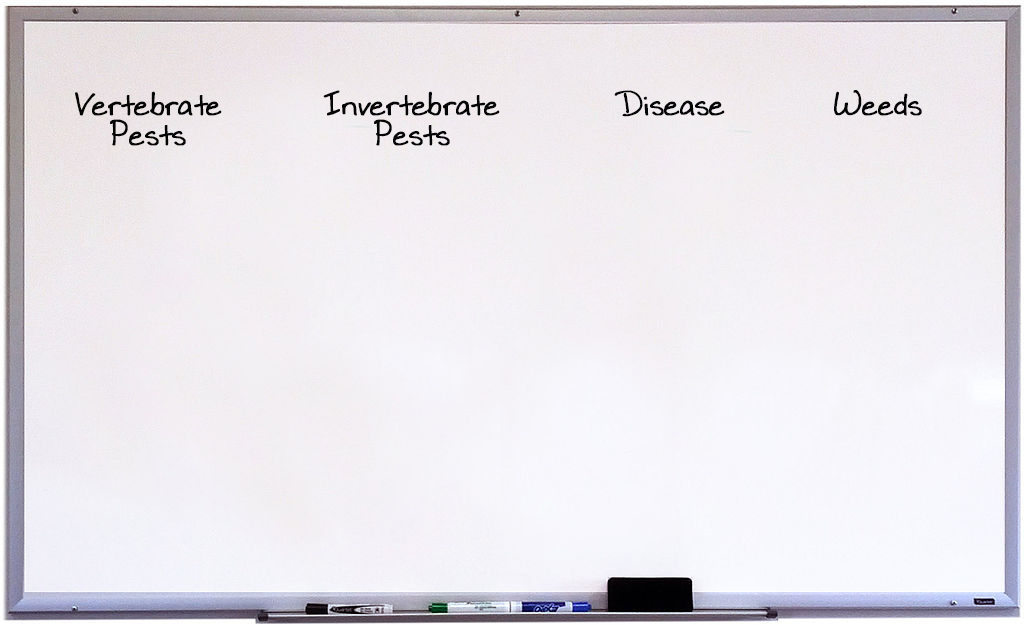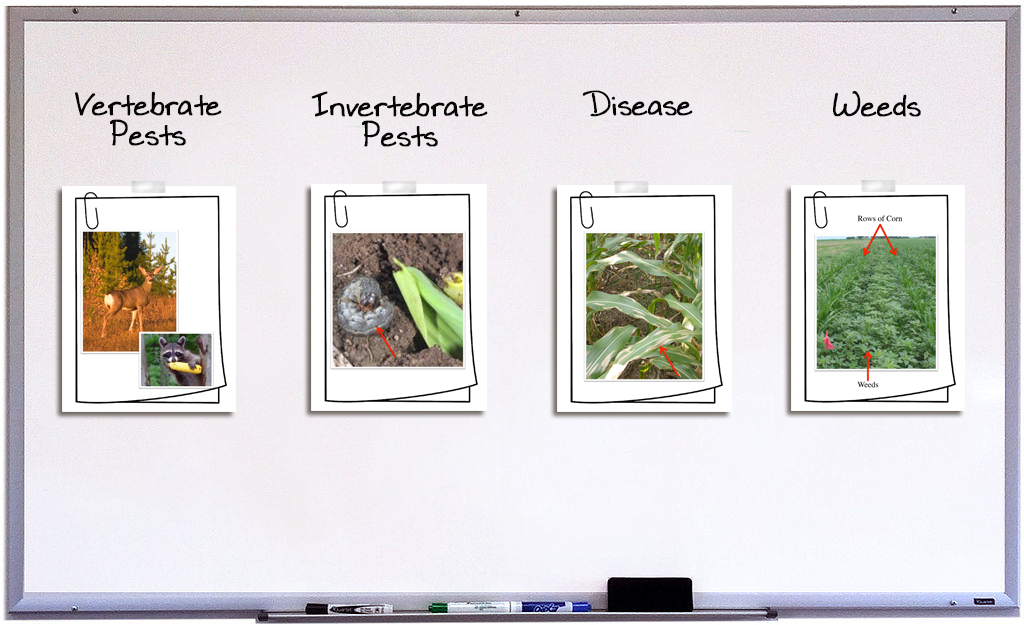Pests
Pests are organisms living and growing where they are not wanted and can cause damage to plants, humans, structures, and other creatures. Pests can be broken into four main categories:
- Vertebrate Pests – Have a backbone. Examples: Rodents, birds, reptiles, and other mammals
- Invertebrate Pests – No backbone. Examples: Insets, spiders, ticks, slugs
- Weeds – Any plant growing out of place.
- Disease – Fungi, bacteria, viruses, and other microorganisms.
Integrated Pest Management
To control pests both in our homes and on crops, integrated pest management is a strategy that we can use. Integrated pest management is a process that uses different ways to control pests. The steps include:
- Identify the Pest
- Monitor Pest Activity
- Choose Control Methods
- Evaluate Results
The control methods in integrated pest management include cultural, biological, mechanical, and chemical. As homeowners use a combination of ways to control pests, farmers also use these methods but in different ways. Depending on the audience, explain control methods from the example of a mouse in the house and/or the example of control pests in agriculture.
- Cultural control means changing the environment. In the home, that can be cleaning up food and keeping the area clean. In agriculture, that means crop rotation in fields, managing the soil for optimum soil health, and choosing resistant varieties, such as corn hybrids that are resistant to a pest.
- Mechanical control means physical objects such as traps, machines, and devices. In the home, a mouse trap may be used. In agriculture, plowing and tillage of the soil might be used to control weeds and traps are also used for monitoring insects and catching pests.
- Biological controls are natural enemies of the pests, such as animals and other creatures. In the home, that could be a cat that eats the mouse. In agriculture, that can be predators like lady beetles and lacewings, or parasites like wasps and flies.
- Chemical controls are poisonous to the pests, such as sprays, dusts, and baits. In the home, mouse bait (a rodenticide) might be used. In agriculture, pesticides are sometimes used to control various pests to crops.
Chemical Safety
Chemical control is a control option in integrated pest management. In agriculture, if farmers are applying pesticides to control pests, they often have to be certified pesticide applicator, which means they have to take a test to obtain their pesticide license and attend meetings to learn more information about applying pesticides safely. When farmers use pesticides, they have to read the pesticide label for instructions, wear necessary personal protective equipment, and apply pesticides at labeled rates. By following the pesticide label, they can ensure they are applying the right amount, as applying too much pesticide could severely damage the crop. They also must keep records of their pesticide application and have a safe place to store pesticide products on the farm.
Pesticide applicators must be responsible when using pesticide products. They sometimes choose to use pesticides as pests would otherwise destroy their crop, but they must be good stewards to protect the environment, their families and other people, and also themselves.
Pesticides must also be used responsibly in the home. If you are using any product to control pests, whether they are vertebrates, invertebrates, weeds, or diseases, pesticides must be used responsibly. Examples of pesticide products in our home include rodenticide bait to control mice, flea control for pets, insect repellents, any cleaning product that controls bacteria, viruses, and other disease, and more. Just like the farmers, homeowners should always read the label and follow the label instructions. Pesticides should be stored properly, out of reach of children, when not in use. Mr. Yuk can be placed on the products to alert family members of a potential poisonous product.

